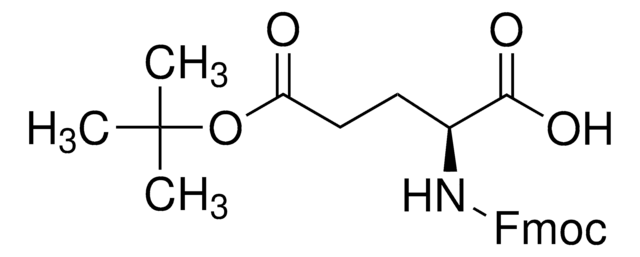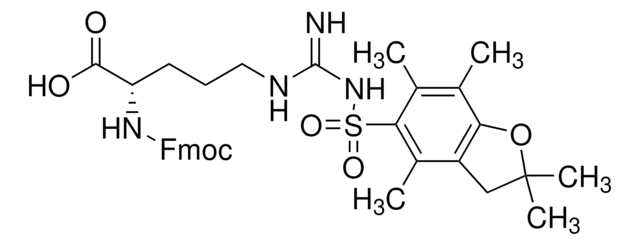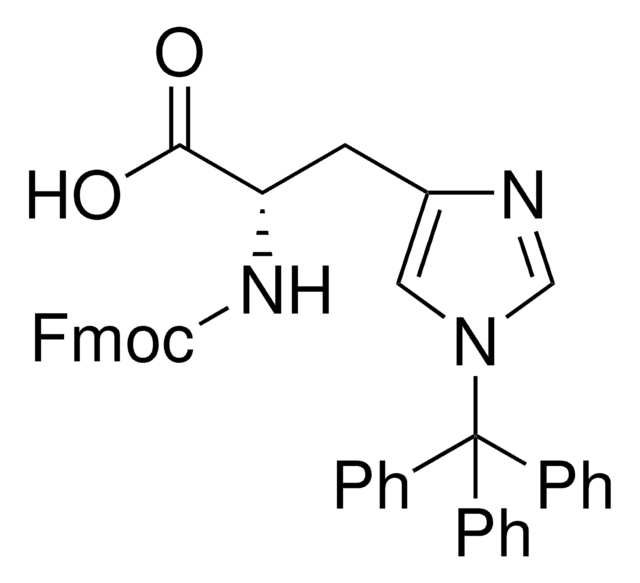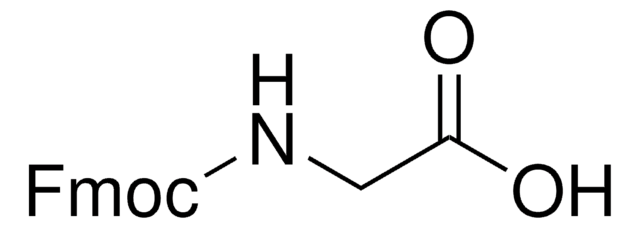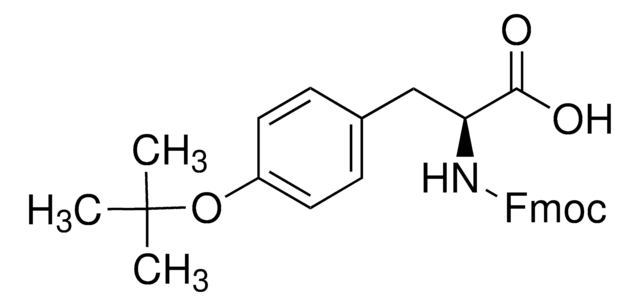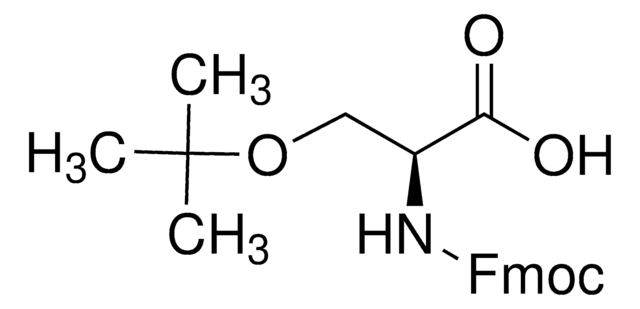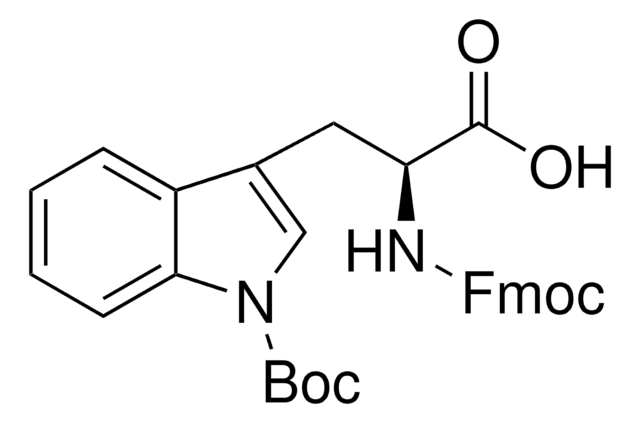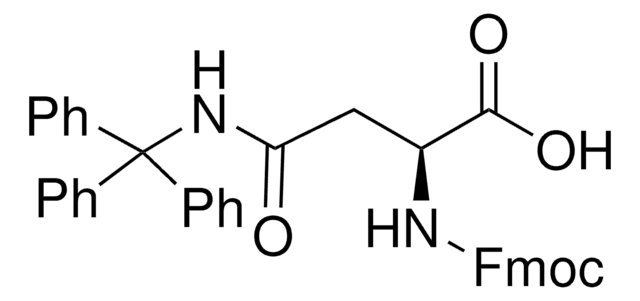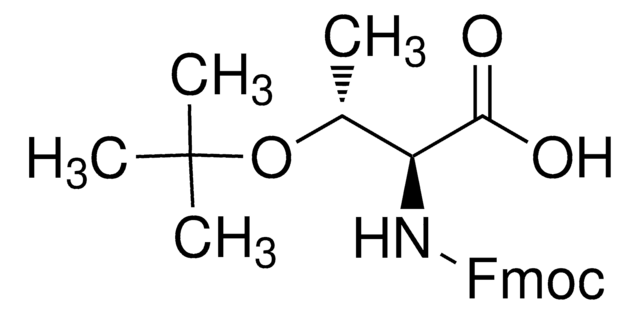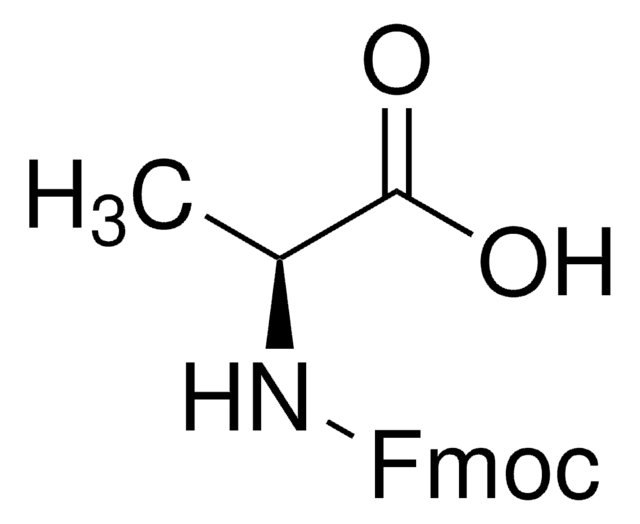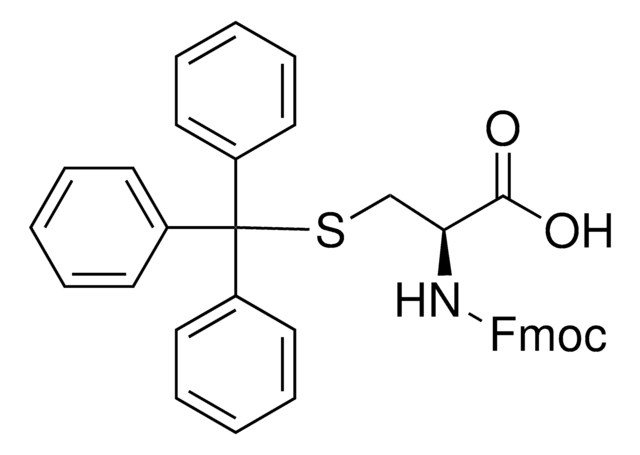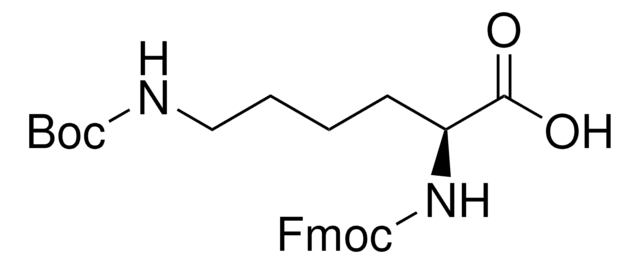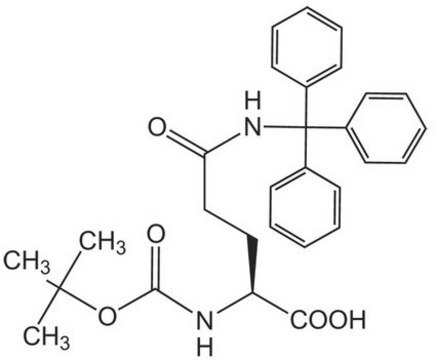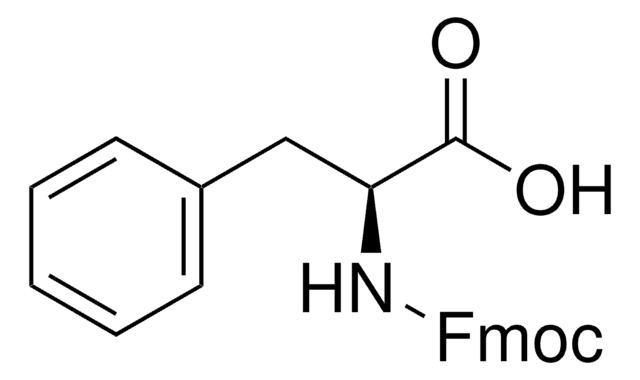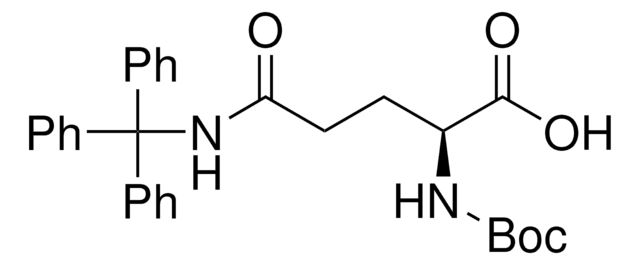47674
Fmoc-Gln(Trt)-OH
≥98.0% (HPLC)
Synonym(e):
Nα-Fmoc-Nδ-trityl-L-glutamin
About This Item
Empfohlene Produkte
Qualitätsniveau
Assay
≥98.0% (HPLC)
Form
powder
Optische Aktivität
[α]/D -14.0±1.5°, c = 1% in DMF
Eignung der Reaktion
reaction type: Fmoc solid-phase peptide synthesis
Anwendung(en)
peptide synthesis
Funktionelle Gruppe
Fmoc
Lagertemp.
2-8°C
SMILES String
OC(=O)[C@H](CCC(=O)NC(c1ccccc1)(c2ccccc2)c3ccccc3)NC(=O)OCC4c5ccccc5-c6ccccc46
InChI
1S/C39H34N2O5/c42-36(41-39(27-14-4-1-5-15-27,28-16-6-2-7-17-28)29-18-8-3-9-19-29)25-24-35(37(43)44)40-38(45)46-26-34-32-22-12-10-20-30(32)31-21-11-13-23-33(31)34/h1-23,34-35H,24-26H2,(H,40,45)(H,41,42)(H,43,44)/t35-/m0/s1
InChIKey
WDGICUODAOGOMO-DHUJRADRSA-N
Suchen Sie nach ähnlichen Produkten? Aufrufen Leitfaden zum Produktvergleich
Verwandte Kategorien
Allgemeine Beschreibung
Anwendung
Lagerklassenschlüssel
11 - Combustible Solids
WGK
WGK 1
Persönliche Schutzausrüstung
Eyeshields, Gloves, type N95 (US)
Analysenzertifikate (COA)
Suchen Sie nach Analysenzertifikate (COA), indem Sie die Lot-/Chargennummer des Produkts eingeben. Lot- und Chargennummern sind auf dem Produktetikett hinter den Wörtern ‘Lot’ oder ‘Batch’ (Lot oder Charge) zu finden.
Besitzen Sie dieses Produkt bereits?
In der Dokumentenbibliothek finden Sie die Dokumentation zu den Produkten, die Sie kürzlich erworben haben.
Kunden haben sich ebenfalls angesehen
Artikel
With a growing peptide drug market the fast, reliable and uncomplicated synthesis of peptides is of paramount importance.
Unser Team von Wissenschaftlern verfügt über Erfahrung in allen Forschungsbereichen einschließlich Life Science, Materialwissenschaften, chemischer Synthese, Chromatographie, Analytik und vielen mehr..
Setzen Sie sich mit dem technischen Dienst in Verbindung.